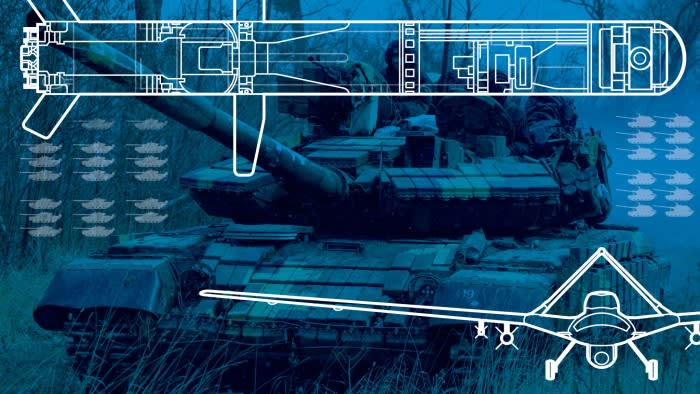- Joined
- Apr 18, 2013
- Messages
- 94,328
- Reaction score
- 82,713
- Location
- Barsoom
- Gender
- Male
- Political Leaning
- Independent

How is Ukraine using western weapons to exploit Russian weaknesses?
Moscow’s failure to make a lightning advance and capture major cities owes much to the use of compact equipment
 www.ft.com
www.ft.com

3.14.22
Western intelligence, war photographers and thousands of hours of unverified camera footage posted to social media have depicted the defining images of Russia’s invasion of Ukraine: destroyed, burnt out and abandoned Russian tanks and other military vehicles, blocking roads or stuck in ditches. Ukraine’s success in repelling Russia’s initial plan for a lightning advance and capture of Kyiv and other major cities owes much to its army’s consistent ability to target and destroy vehicles, inflicting both heavy losses and large delays to advancing convoys. Often armed only with shoulder-launched, portable rocket launchers — thousands of which have been provided by western countries since the invasion began — small groups of Ukrainian troops have used their terrain and Russia’s tactics to their advantage, and helped lead a resistance that has surprised even Kyiv’s closest backers in the west. The compact weapons used by Ukraine and the heavy artillery relied upon by Russian troops form the backbone of the contrasting tactics employed by both sides. One of the main outcomes of a root-and-branch overhaul of the Russian armed forces that culminated in 2012, the battalion tactical group is the primary fighting unit of the country’s army. Armed with tanks, howitzers, artillery and air defence systems, they were envisaged as multi-theatre operators, with the ability to shift from rapid assault to long-range attacks and support operations for other units.
But their heavy reliance on vehicles — roughly 75 in each — and relatively low numbers of just 200 infantry troops makes them particularly vulnerable to attacks on their flanks or rear. Ukrainian troops drew two conclusions. First, they realised that no matter how large an armoured column was, it would only be as wide as the road, and could only move as fast as the front vehicles. And second, defending troops realised they could operate relatively freely in the forests, fields and villages along the sides of the road. Russian vehicles proved vulnerable to ambushes from small teams of Ukrainian troops. Key to these ambushes has been the widespread use of troop-carried, shoulder-fired anti-tank missiles, such as the US-made Javelin. Western intelligence officials broadly agree that one of Russia’s most costly military mistakes stemmed from its failure to destroy both Ukraine’s air force and its air defence systems in its initial barrage of precision-guided cruise missiles in the opening hours of the invasion. In addition, the use of shoulder-launched surface-to-air missiles by Ukrainian troops to successfully attack Russian helicopters and low-flying fighter jets in support of ground forces has deepened Moscow’s reticence over deploying too much air power alongside advances. That has reduced both its surveillance and attack potential. Russia has lost at least 28 aircraft and helicopters so far in the invasion compared to just 10 from Ukraine’s air force, according to the Oryx blog, which uses open source photography to compile its data.
The UA reported this morning that another 2 Russian jets were shot down yesterday.
